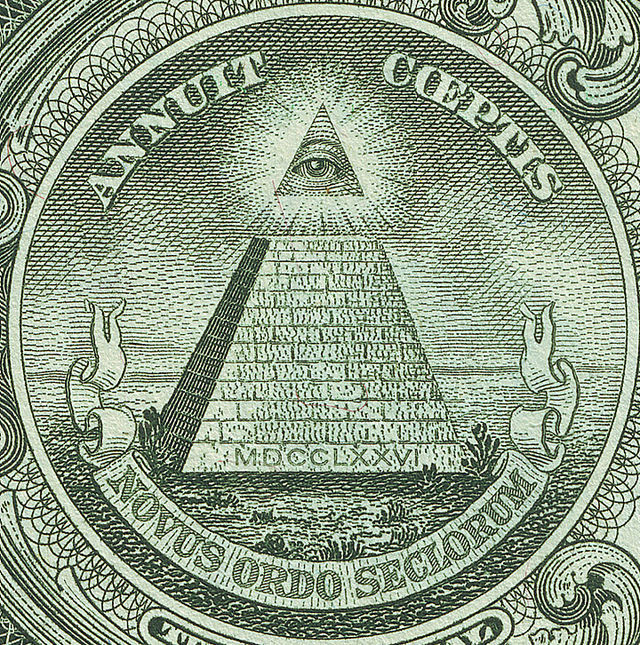The Masonic Dollar Bill
March 19, 2015

THOUGH the establishment of public, secular education was historically one of the key goals of the secret, anti-Christian movement known as Freemasonry, which claims as its own such important figures as George Washington and Benjamin Franklin, it is interesting to note that public school children are taught almost nothing about this powerful cult and its influence on the founding of America. How many students learn about the Great Seal and its symbolism on the dollar bill? I never was taught anything about it. But then that’s the way it is supposed to work. Building the New World Order, or the Novus Ordo Seclorum, as it is called on the dollar bill — an order in which true religion is abolished and all nations are combined in universal brotherhood under Masonic principles, an order in which feast days for heroes of holiness such as St. Joseph are distant memories — requires secrecy. And so almost every day, the Great Seal passes through our hands and we are oblivious to its sinister meaning. Masons like to call anyone who does see this meaning a “conspiracy theorist” — a very effective rebuke as good-natured, sociable Americans do not want to be seen as kooks.
From Insider.org:
The symbols of the Great Seal, which are featured on the dollar bill, are clearly intended to embody the beliefs of those who founded the United States of America. The current design of the Great Seal was approved by Congress on 20 June 1782, and the seal was introduced to the dollar bill in 1935. The continued official use of Masonic symbols today indicates that these beliefs remain at the heart of the U.S. establishment.
What were the beliefs of the founders of America? Numerous sources [apparently] outside Freemasonry report that the vast majority of the American founders and signatories of the U.S. Constitution were Freemasons. Anti-Mason material[2] routinely claims that almost all of America’s founding fathers were members of a Masonic Order. Official sources within Freemasonry counter-claim that some but not all of America’s founders were Freemasons, and point out that the Masonic status of many of the alleged Masonic founding fathers cannot be proven conclusively. The aforementioned school of thought is corroborated by well-documented reports from some authoritative Masonic sources; thus, Manly Palmer Hall, a thirty-third degree Mason, wrote: “Of the fifty-five members of the Constitutional Convention, all but five were Masons.”[3]
One side of the Great Seal shows an ancient Egyptian pyramid, beneath a triangle containing a glowing eye. The shining eye in the triangle is a certainly a famous and common Masonic symbol, although some Masonic sources prefer to deny this. The All Seeing Eye …. is one of the most important and spiritual Masonic symbols, and the distinguished Freemason George Washington, first President of the United States of America, wore it emblazoned boldly on his Masonic apron. The front of the Great Seal displays an Eagle, which is also an important symbol in Masonic traditions. The use of the blazing eye in the triangle motif, surrounded by rays of light, in the official seal of the Ordo Templi Orientis, confirms the occult significance of this symbol.
